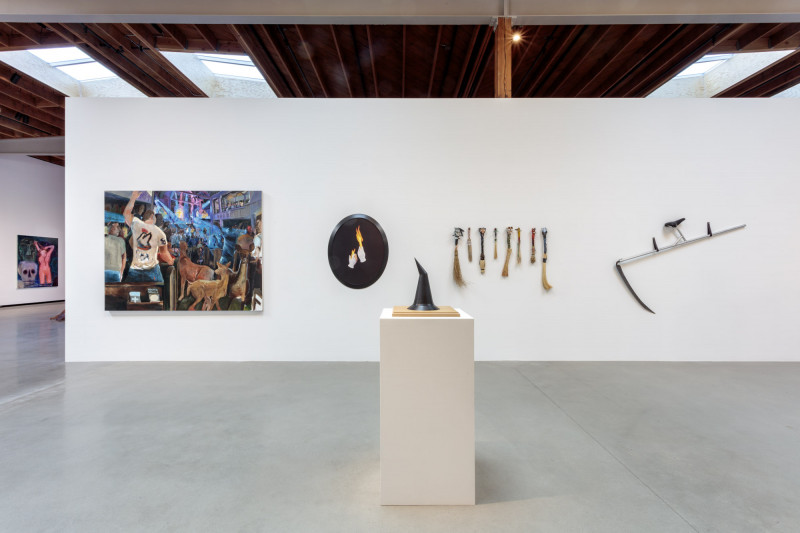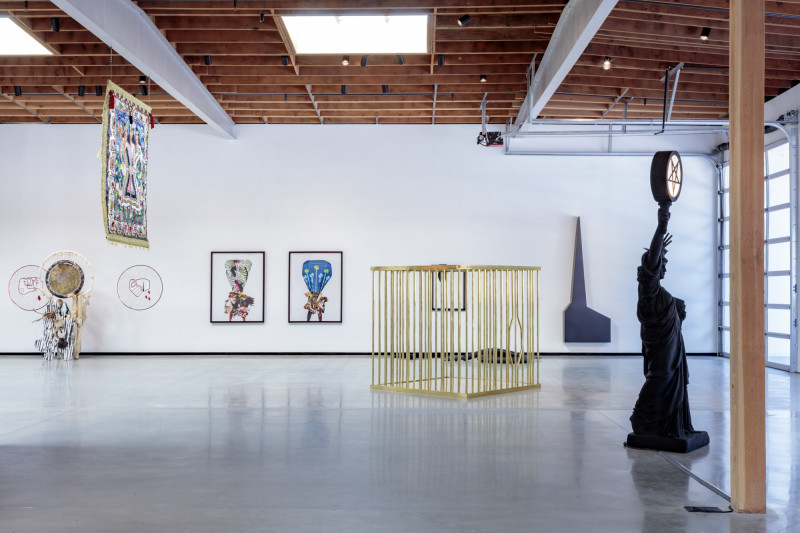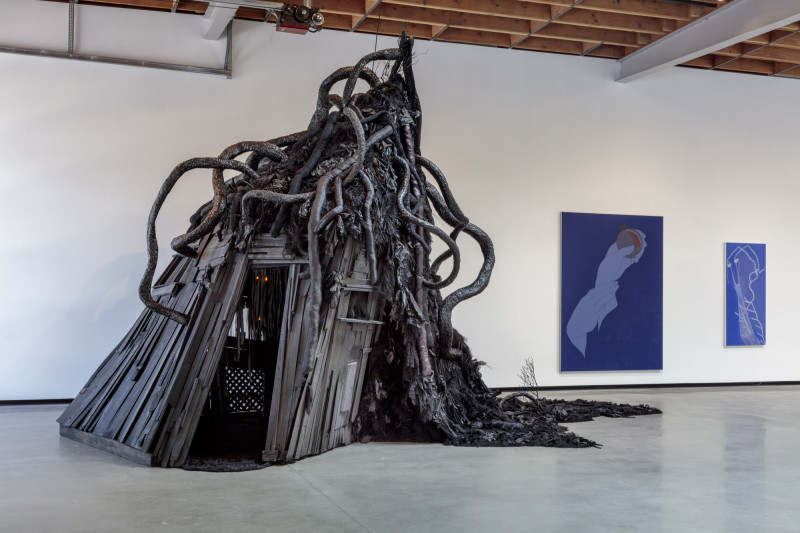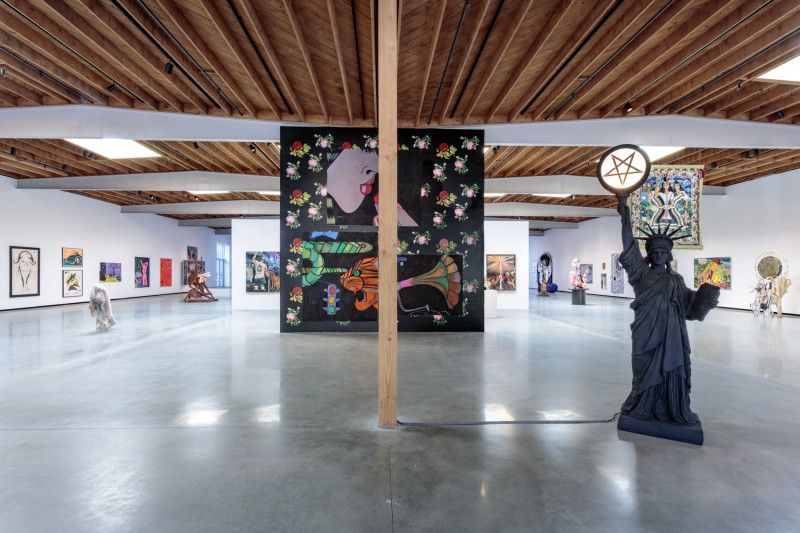My experience at the opening night of All of Them Witches–snaking through the costumed crowds, the abundance of art from such a wide-reach of featured artists–78!– was a maddening, sensual delight–because women, because witches. With so much to feast my eyes on, with such an excess of pagan elements, along with the as-promised, lethal-injection of witchy-sensibility, it was as if I had agreed to something beforehand, had made a deal with the devil; that to partake, required initiation, and to taste of all its delights, would cost my intimate relationship with the artist: both they and their individual work would dissolve.
I floated past the imagery of sexual awakening, of tiny rituals, and the horror of bodily change as it flashed before me; meaning, the emphasis seemed less on whose work was whose, and just why it was there, but rather a veiled cataloging with a mystical pattern I longed to divine. I registered paintings with lusty themes, witch huts, and stripper heels, shadowy women on stairwells, I repeated the names of artists I was familiar with, and artists I hoped to remember and follow, involuntarily whispering the spell. A painter friend turned to me and said, wryly smiling: you’re writing about this? How? It’s all over the place!

Gallery view courtesy of Jeffrey Deitch Los Angeles
And it was. There was the impressive gathering of so many new talents I have come to love–Amy Bessone and Celeste-Dupuy-Spencer especially–and juxtaposition of old favorites like Ana Mendieta and Juanita McNeeley. Yet a part of me was unnerved. Was inviting this sort of feasting, the something-for-every-type-of-witch, opportunistic? Was the catch-all, witchy draw offering up the works themselves like the fetishized head of John the Baptist to Moreau’s Salome?
I am sensitive to the notion that Instagram has changed the built world. Posting to align oneself with cultural capital will always serve Capitalism, and serving Capitalism ruins everything. Critics have been apt to point out that the quest to be “instagrammable” not only creates an opportunity on which the institution can capitalize, but has also shifted how exhibitions are constructed and experienced — look no further than the Instagrammable popularity of Yayoi Kusama and James Turrell to see the trend enacted.

Gallery view courtesy of Jeffrey Deitch Los Angeles
But sifting through all the geotags of the gallery one night, I was struck by things I still wanted to see, there were entire paintings I glossed over–the geotags were an archive of a different experience, in fact, endless permutations of experiences that could still be had. On a Wednesday afternoon, gallery-ghost hour, in late light, I returned and followed this time the breadcrumb of flame emojis that were popping up over new artist’s work, and appreciate each for myself. To once again, by following the flame, burn the online effigy, and take part in the ritual.
In certain ways, if we reduced artistic work to content, then the content of All of Them Witches mirrored the content regularly found on my Instagram discover feed. When I got to admire for myself, Amy Bessone’s Untitled (I’m Not Suzanne), the pink-bodied woman with the wet hair, the skull, and look at the way the water around the subject’s feet seemed to move, there was something affective, so much more than the content of its parts I knew a hashtag like: #skull, #witchy, #woman, #water would never yield the beauty and achievement of her paintings. But knowing that on the internet, this painting could be cataloged as such by an unfeeling algorithm, makes me think this show was an important reminder to stay vigilant in our own practices, remember what we consume, and what we conjure.

Gallery view courtesy of Jeffrey Deitch Los Angeles
When I consider the coven of artists who appreciate each other, who repost and share, who feast off the algorithm for their own inspiration, and perhaps even the curators of All of Them Witches who cleverly anticipated our public witchy practice, I am brought back to Mikhail Bakhtin and his idea of carnival. Bakhtin saw the importance of carnival in its “offering a completely different, nonofficial, extraeclessiastical and extrapolitical aspect of the world, of man, and of human relations; they built a second world and a second life outside of officialdom…” He goes on to say, it “is by no means a purely artistic form nor a spectacle and does not, generally speaking, belong to the sphere of art. It belongs to the borderline between art and life. In reality, it is life itself, but shaped according to a pattern of play.”
All of Them Witches allowed all of us witches a night of the extraecclesiastical, a night free to play, and perhaps approach our relation to the world, when we exited, anew.
All of Them Witches
Organized by Dan Nadel and Laurie Simmons



















0 Comments